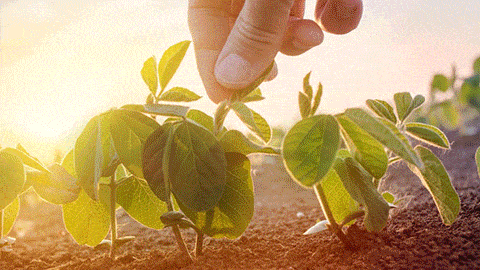Agriculture In The United States of America
Thanks to its natural resources and land conditions, the United States is one of the world’s leading agricultural producers and suppliers. In 2019, the U.S. farming industry employed more than 960 thousand people around the country. Across the U.S. there are numerous farms of various sizes. In 2021, the total number of farms stood at just over two million. On average, farm sizes in the U.S. are around 445 acres in size and in total there are about 89 5million acres of farmland across the country. Altogether the real estate value of farming land in the U.S. amounted to around 2.9 trillion U.S. dollars.

Figure 1: Top agricultural crop in each state based on export earnings
Legend: Top agricultural crop




Agriculture In Florida
State Export
Florida is famous especially for its oranges, producing the bulk of the country’s citrus fruit and is second only to California in vegetable production. Citrus fruits account for a significant portion of farm receipts, and Florida’s grapefruit production not only is the highest in the country but also represents a large proportion of the world total. Tomatoes are the leading vegetable crop. Sugarcane is the primary Florida field crop, and the state produces roughly half of the country’s total.
About two-fifths of the state is farmland, and much of this is in either pasture or timber. Only a small fraction of Florida’s total land is used for harvested crops. Farmsteads are common in northern Florida, where field crops are important.


Figure 2: Map of produce
Citrus groves occupy much of central Florida and the east coast, while vast expanses of cattle land spread along the west coast and north and south of the citrus belt. In the southern part of the state, the cultivation of sugarcane and vegetables around Lake Okeechobee has produced the present-day equivalent of plantation agriculture. The small, private farm has little place in these systems, having been superseded by mechanization and the use of migratory labour. The adverse social conditions of migrant workers, which have occasionally given rise to national concern, remain one of the negative aspects of a generally affluent state. The rise of corporate agriculture has led to an inevitable increase in farm size and a corresponding reduction in farm numbers.

Export
Florida’s top destinations for agricultural commodities, accounting for 55.9 percent of total exports, are Canada, Netherlands, Bahamas, Dominican Republic, Panama, Mexico, Colombia, Trinidad and Tobago, Venezuela, and Jamaica. Additionally, South Korea, Germany, Chile, Brazil and Colombia have become the state’s fastest growing major markets with over $50 million in exports from 2009 to 2013.

Figure 3: Major shipping routes of Florida products

Grapefruit, oranges and orange juice continue to be staples of Florida’s export commodities. Florida’s grapefruit, for example, accounted for 73.2 percent of all U.S. grapefruit exports, resulting in $98.63 million export sales during 2013. Tomatoes, strawberries, blueberries, watermelons and peppers are also among the top agricultural commodities exported from Florida, and the state ranked first in U.S. exports of snap beans totaling $28.14 million. By commodity category however, top agriculture exports are meats, prepared foods, prepared fruits and vegetables, fruits and nuts, and fish.
Future of Cape Coral
There are 23 food and agriculture programs in the greater Cape Coral metro area, including the cities of Cape Coral and Fort Myers. Combined, these Cape Coral metro food and agriculture nonprofits employ 103 people, earn more than $57 million in revenue each year, and have assets of $16 million. As climate change continues to become a hot topic with record-high temperatures being set, Cape Coral-based health food supplement company Mercola is hoping to do something about it by promoting biodynamic farming. Mercola has a 10,000-square-foot market at 125 SW Third Place where it showcases 1,400 different kinds of health foods, supplements and other products that are mostly bought online from customers across the country. About 75 of those products resulted from biodynamic farming.
“We’re going to transition farms into regenerative agriculture,”


Figure 4: Crop Farming
Crop farming is the cultivation of plants for food, animal foodstuffs, or other commercial uses. A variety of techniques including organic production methods can be used to manage crops.

Figure 5: Biodynamic farming diagram
Biodynamic farming is a technique of crop production based on astronomical activities such as lunar cycles and also easy availability of locally-sourced materials. Moreover, this farming technique prohibits the use of chemicals and external mediums for crop production. However, there is a misconception that biodynamic and organic farming may seem identical, but there are lots of differences between the both.
Bibliography
https://www.statista.com/topics/1126/us-agriculture/#dossierKeyfigu
res
https://www.britannica.com/place/Florida/Agriculture-forestry-and-fi
shing
https://www.fdacs.gov/Agriculture-Industry/Florida-Agriculture-Over
view-and-Statistics
https://farmflavor.com/florida/fresh-florida-products-global-appeal/
https://www.gulfshorebusiness.com/climate-change-prompts-capecorals-
mercola-to-stress-biodynamic-farming/
https://www.tractorjunction.com/blog/biodynamic-farming-importan
ce-sustainability-faqs